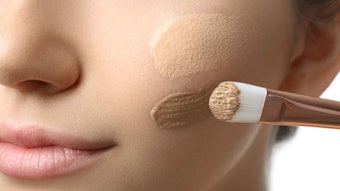
Enzymes are complex proteins produced by living organisms that act as catalysts to bring about specific biochemical reactions. While enzymes were discovered in 1833, it was not until 1926 that they were established as uniquely active proteins. Diastase, from malt, was the first to be extracted and eventually shown to be amylase, an enzyme that converts starch into sugar.1
Enzymes are responsible for controlling thousands of reactions in a cell; at any given moment, all the work happening inside a cell is conducted by enzymes.2 These temperature- and pH-sensitive entities are highly specific, chemical reaction machines with interesting properties. They can be specific for both the type of reaction and related substrate that’s used; and they produce no by-products.
The purpose of enzymes in a cell is to increase the rate at which reactions occur, to allow the cell to build things or take them apart very quickly.2 This is because at the temperature and pH level of most cells, chemical reactions such as for cell growth and reproduction do not proceed fast enough to maintain cell viability. Enzymes accelerate the rates of reactions by more than a million-fold, so reactions that would take years can occur in fractions of seconds with the appropriate enzyme.3
An enzyme is formed by stringing together 100 to 1,000 amino acids in a specific order. The chain of amino acids then folds into a unique shape. This shape is what allows the enzyme to carry out specific reactions. Enzymes work by a shape recognition; the substrate must form a complex with the enzyme so they can lock together to transfer energy and form a reaction. This reaction is what binds the substrate to the enzyme’s reactive site.
For example, the sugar maltose is made from two glucose molecules bonded together. The enzyme maltase is shaped in such a way that it can break the bond and free the two glucose pieces (see Figure 1). While maltase is specific in that it can only break maltose bonds, it can do so very rapidly—i.e., in excess of 1,000 maltose bonds per second—and efficiently. As stated, other types of enzymes can put atoms and molecules together. Whether breaking down or building up, specific enzymes for each reaction are needed to make the cell work properly.4
Enzyme Types
The International Union of Biochemistry and Molecular Biology has developed a nomenclature for enzymes, which it refers to as EC numbers.5 Each enzyme is described by a sequence preceded by EC. Examples are shown below.
EC 1, Oxidoreductases: catalyze oxidation/reduction reactions;
EC 2, Transferases: transfer a functional group, e.g., a methyl or phosphate group;
EC 3, Hydrolases: catalyze the hydrolysis of various bonds;
EC 4, Lyases: cleave various bonds by means other than hydrolysis and oxidation;
EC 5, Isomerases: catalyze isomerization changes within a single molecule; and
EC 6, Ligases: join two molecules with covalent bonds.
Enzymes capture free radicals, preventing skin damage caused by pollution, bacteria, smoke, sunlight and other factors.
Coenzymes and Cofactors
While some enzymes consist of only proteins and contain no other chemical groups, some globular conjugated proteins require an additional chemical component known as a cofactor. The cofactor can be inorganic or a complex organic molecule called a coenzyme.
Many coenzymes are derivatives of vitamins, especially the water-soluble B vitamins calcium pantothenate, niacin and pyridoxine hydrochloride. Other enzymes depend on specific cofactor minerals including zinc, iron, magnesium, copper and others.
Enzymology in Cosmetics
The cosmetics industry has been using enzymes such as pumpkin for resurfacing and smoothing skin for many years.6 Enzymes have also proven useful to treat skin conditions related to skin aging, acne, congestion and pigmentation. Their most common benefits, described in detail below, include free radical scavenging, protein breakdown, structural reinforcement, antibacterial benefits and exfoliation.
While the benefits of enzymes have long been known, interest in enzymology for cosmetic and dermatology applications has more recently grown. This is due in part to advances in optimizing their functionality, safety and stability in cosmetic systems to provide skin and product protection—not to mention their natural and renewable status.
Indeed, coenzymes and cofactors in cosmetics, such as the well-known coenzyme Q10, represent a safe way to promote the efficient functioning of skin’s enzymes. Coenzymes and cofactors generally have low molecular weights, enabling them to penetrate through the stratum corneum to help activate the enzymes that are present.7 They also are stable and relatively easy to formulate into cosmetics.
Free Radical Scavenging
One area where topical enzymes have shown significant benefits is in skin protection.8-10 Enzymes capture free radicals, preventing damage to the skin caused by environmental pollution, bacteria, smoke, sunlight and other harmful factors. In this capacity, enzymes work successfully on the surface of skin, without the need to penetrate deeper to reach living cells.
Perhaps one of the most ubiquitous protective enzymes is superoxide dismutase (SOD). This enzyme, often extracted from yeast, is found in almost all living organisms and works to protect the cells from free radicals in aqueous environments. It also is found in barley grass, broccoli, brussels sprouts, cabbage, wheatgrass and most green plants.
SOD, in combination with catalase, is responsible for protecting skin proteins from aging due to oxidation.11, 12 It works by dismutation, a process by which a highly reactive oxygen free radical is converted to a less reactive form. This is important to aerobic cells. If the oxygen molecule is not completely reduced to two water molecules (by accepting four electrons), the partially reduced superoxide radical will remain and can cause damage to skin.
SOD is used in cosmetics and personal care products as an anti-aging ingredient and antioxidant. It has been shown to prevent wrinkles, fine lines, age spots, help with wound healing, soften scar tissue, protect against UV rays and reduce other signs of aging.12
Protein Breakdown and Barrier Boost
In another capacity, proteolytic enzymes—also referred to as protease, proteinase or peptidase—are used in cosmetics to break proteins down into their shorter component peptides and eventually, to amino acids. The skin can absorb these components and promote its own cell growth and renewal.13, 14
Proteolytic enzymes are present in bacteria, archaea, certain types of algae, some viruses and plants although they are most abundant in animals. The three most common proteolytic enzymes are pepsin, bromelain and papain. Pepsin is naturally produced by the intestines while bromelain and papain are food enzymes found in pineapple and papaya, respectively. These latter two are often used as cosmetic ingredients.14-16
Beyond proteolytic and anti-free radical functions, enzymes can promote the formation of fats and collagen. Diacylglycerol acyltransferase (DGAT-1), for example, boosts the action of retinoic acid, which accelerates epidermis and hair renewal. Also, lysyl and prolyl hydroxylases, in conjunction with vitamin C, synthesize collagen to maintain the structure of the skin.
Interest in enzymes has grown due to advances in their functionality, safety and stability, as well as sustainable nature.
Battling Bacteria
Another targeted application for enzymes, particularly peroxidase or lacto peroxidase, is to protect cosmetic formulas from bacterial attack. This preservative action relies on the enzyme to consume the oxygen present in a formula so bacteria cannot survive. Peroxidase is found in aqueous extracts of fennel.
Combining Benefits
Some enzymes are also used as topical exfoliants to dissolve and remove dead cells from the surface of skin, leaving it smooth, fresh and bright.17, 18 Enzymes are gentler to skin than AHAs and break down the “glue” that holds the cells together. This results in the shedding of dead cells to speed up skin’s natural exfoliation process.18 Depending on their activity level, some enzymatic peels are administered in professional-grade products by trained estheticians who, to enhance their effectiveness, may combine them with peels such as vitamins.
Oily skin prone to acne, for instance, benefits from a combination of salicylic acid (BHA) and enzymes, whereas sun damaged and uneven-toned skin responds well to the alpha hydroxy acids, e.g., retinoic acid, combined with enzymes. SOD, with its ability to capture free radicals, also can be combined with peroxidase for added free radical-scavenging capabilities. Together, they reduce UV-induced erythema when topically applied.
Conclusions
As the adage goes, “there’s nothing new under the sun.” Enzymes have long been known for their benefits. What is new, however, is their optimized functionality and growing interest in them. For instance, although food and feed remain the largest industrial sectors for enzyme demand, the cosmetics industry is employing them not only in skin care, but also in hair dye, oral care and more recently, sun care products.19
In fact, the market for global industrial enzymes was valued at $4.61 billion in 2016, and is projected to grow at a CAGR of 5.8% from 2017 to 2022, with cosmetics being a principle driver.20 This should come as no surprise considering the industry’s move toward organic and natural compounds to replace petrochemical-based ingredients.
References
All websites accessed March 3, 2017.
- https://worldofenzymes.info/enzymes-introduction/diastase/
- https://science.howstuffworks.com/life/cellular-microscopic/cell2.htm
- ncbi.nlm.nih.gov/books/NBK9921/
- nature.com/scitable/topicpage/cell-metabolism-14026182
- www.chem.qmul.ac.uk/iubmb/enzyme/
- nuskin.com/corpcom/en_US/thesource/skincare/resurfacewithpolishingpeel.html
- smartskincare.com/treatments/topical/coq10.html
- nourishedlife.com.au/article/255446/skincare-benefits-of-coq10.html
- pubs.sciepub.com/jnh/2/3/2/
- library.umac.mo/ebooks/b28050174.pdf
- vitaminstuff.com/superoxide-dismutase.html
- truthinaging.com/ingredients/superoxide-dismutase
- britannica.com/science/proteolytic-enzyme
- draxe.com/proteolytic-enzymes/
- draxe.com/6-unbelievable-health-benefits-bromelain/
- whfoods.com/genpage.php?tname=foodspice&dbid=47
- skininc.com/treatments/facial/exfoliating/Exfoliating-Naturally-with-Enzymes-324360131.html
- bioelements.com/blog/professional-treatments/enzyme-exfoliation-2
- ncbi.nlm.nih.gov/pmc/articles/PMC3962110/
- marketsandmarkets.com/Market-Reports/industrial-enzymes-market-237327836.html











